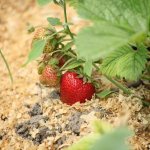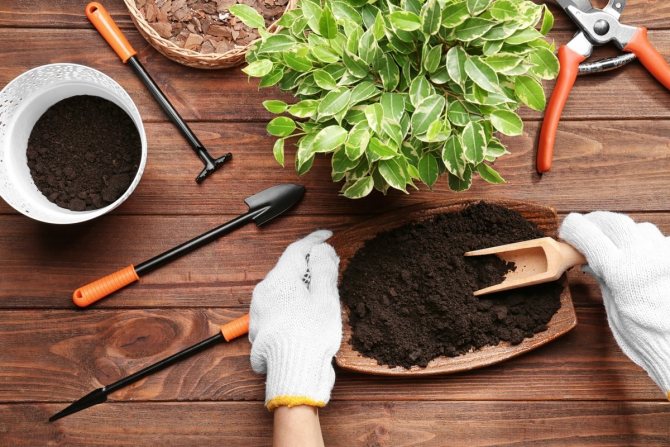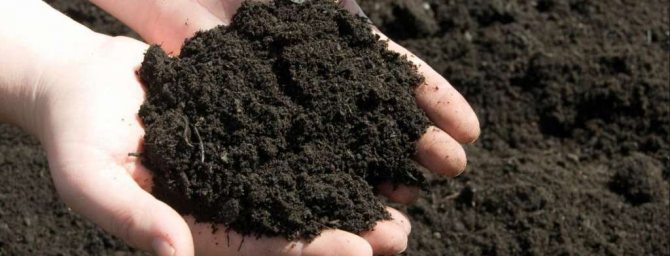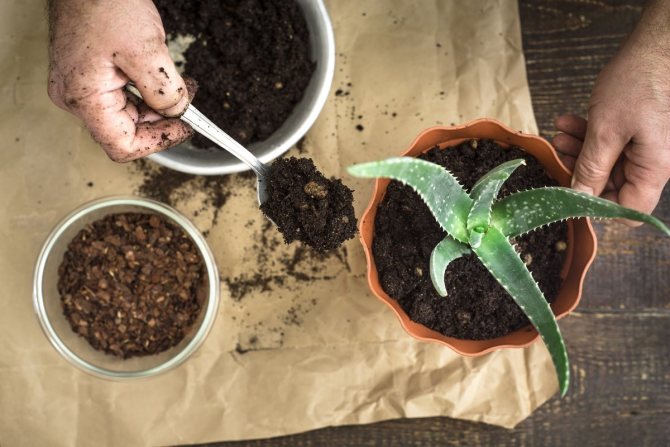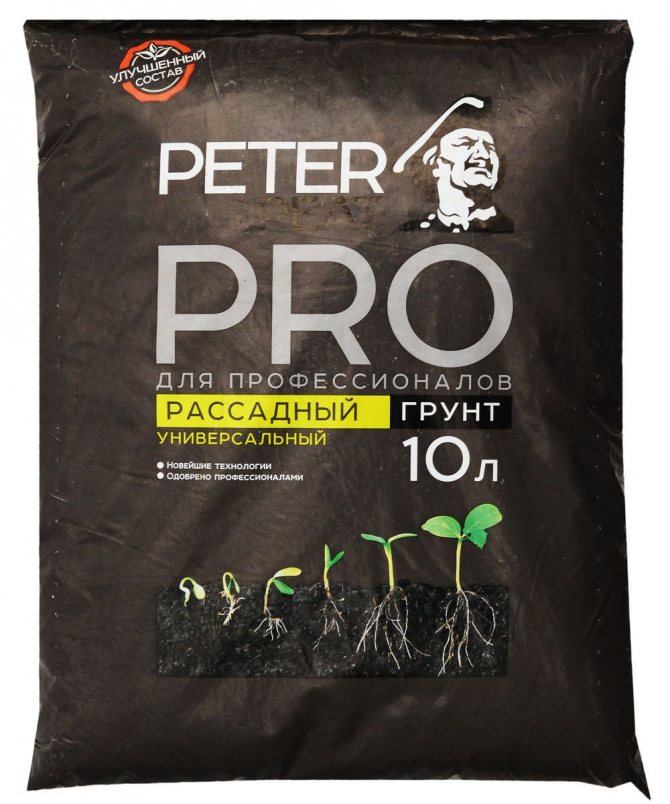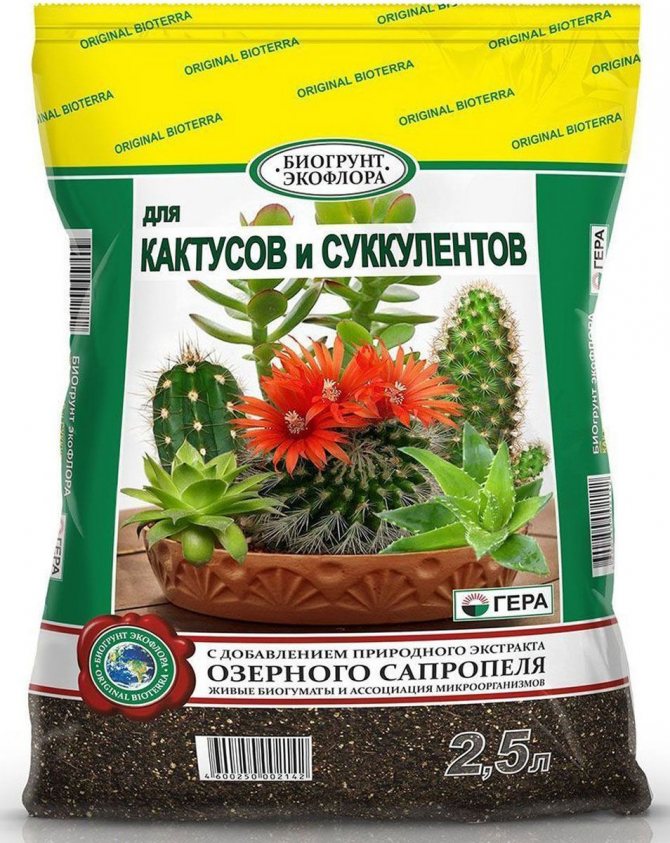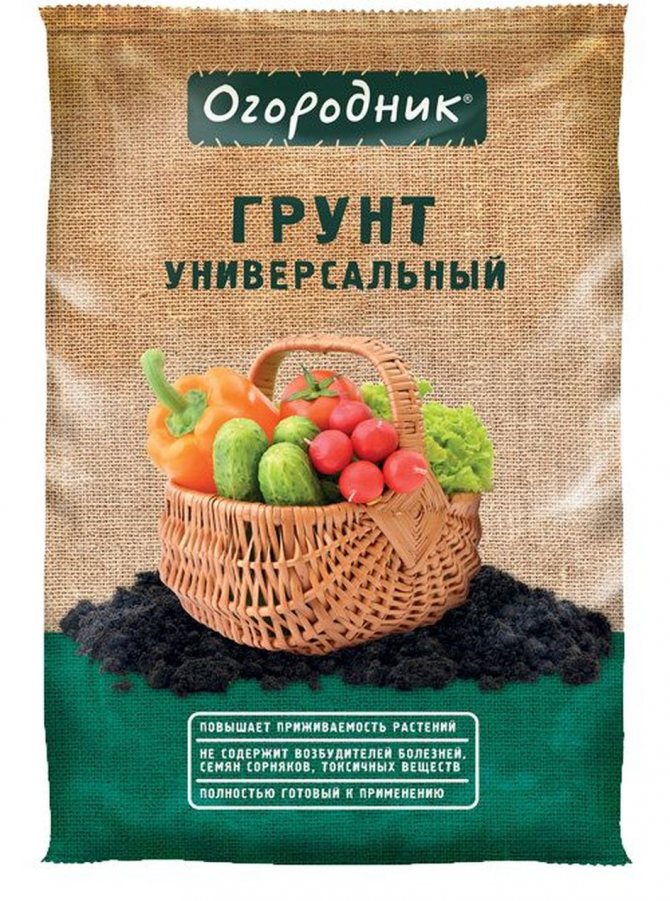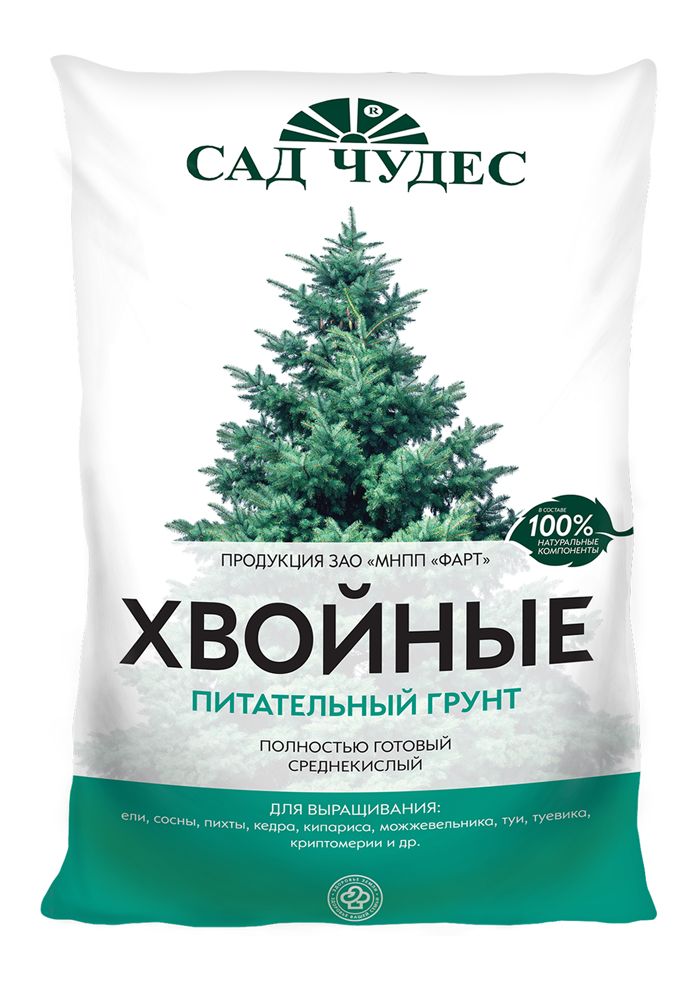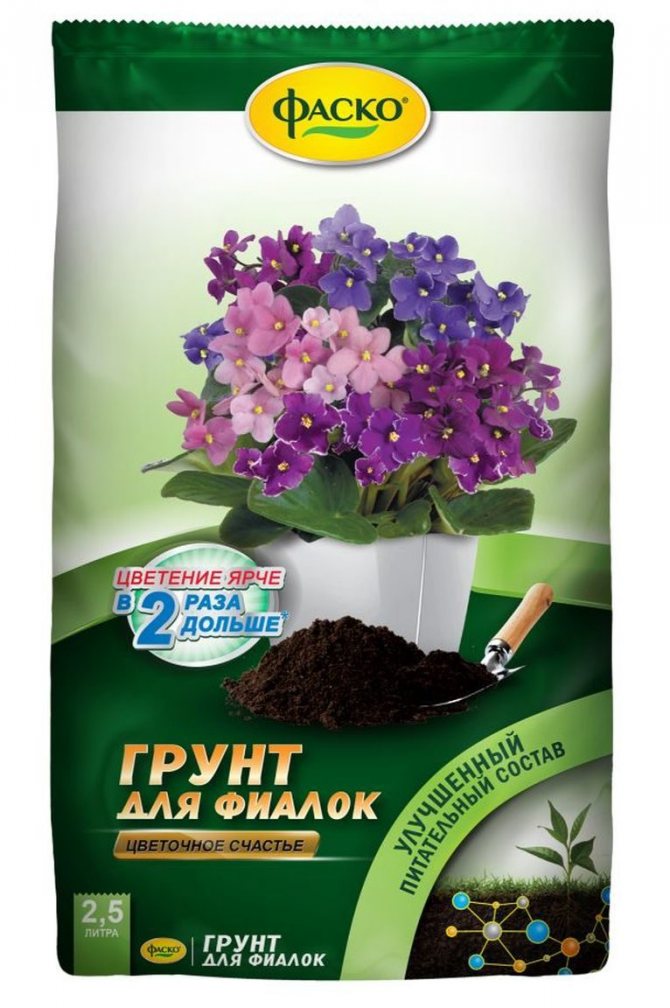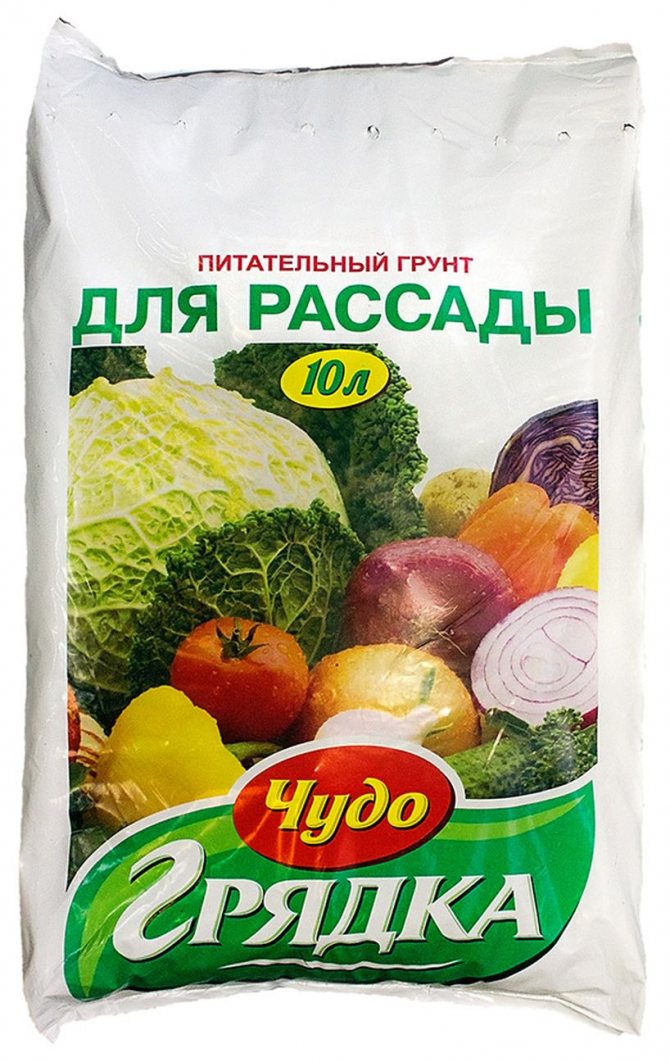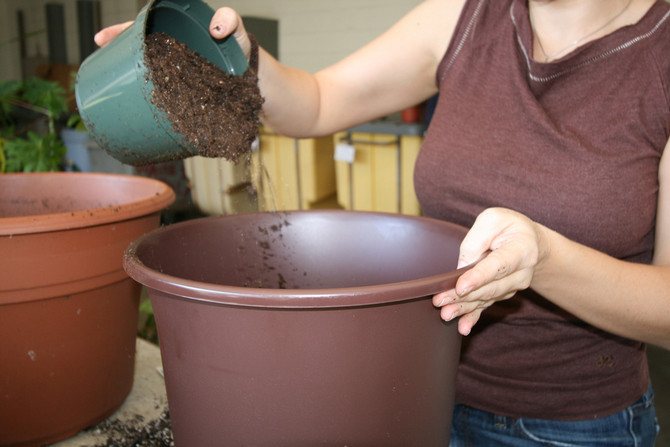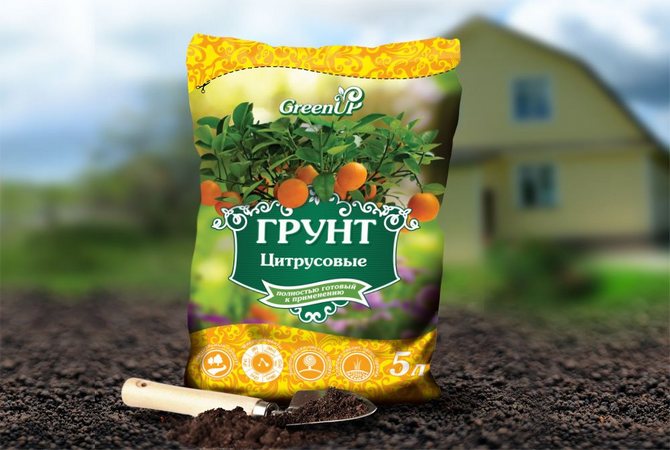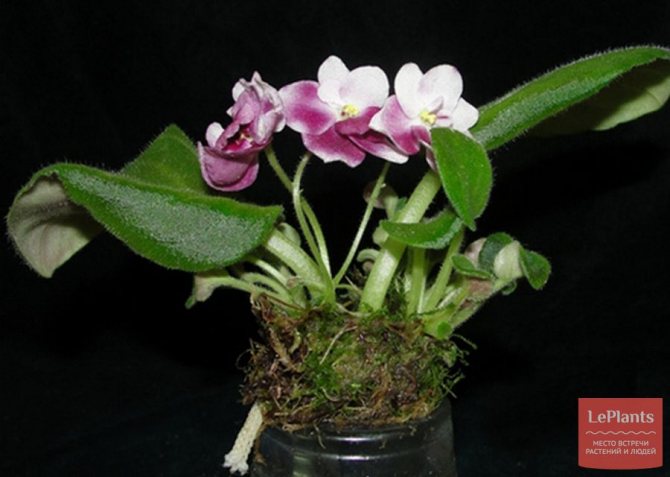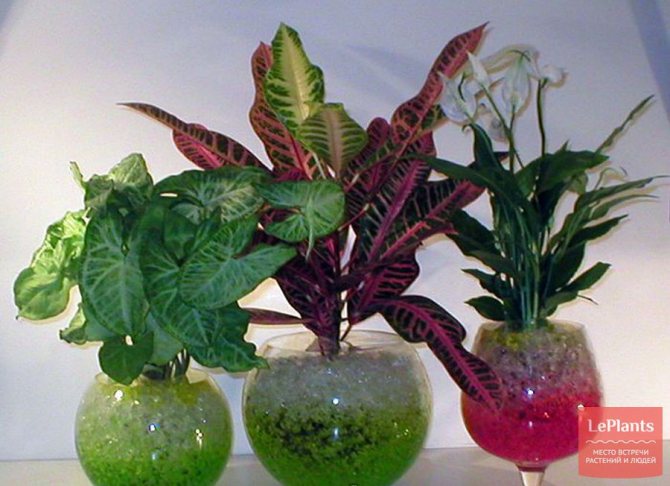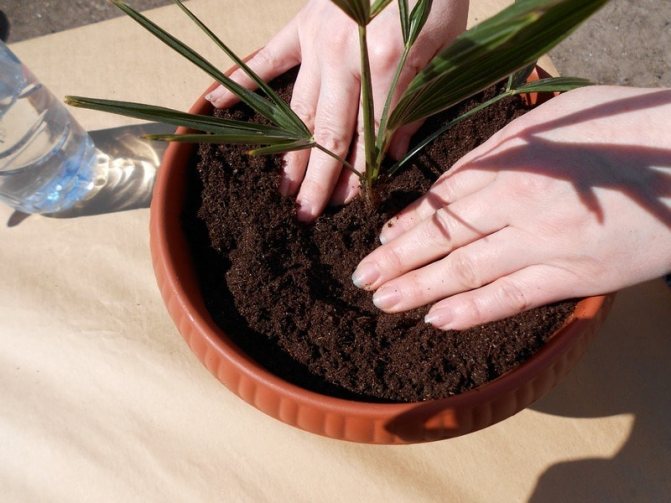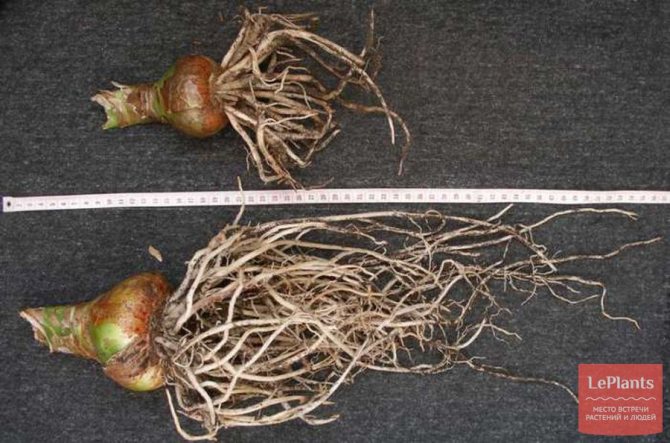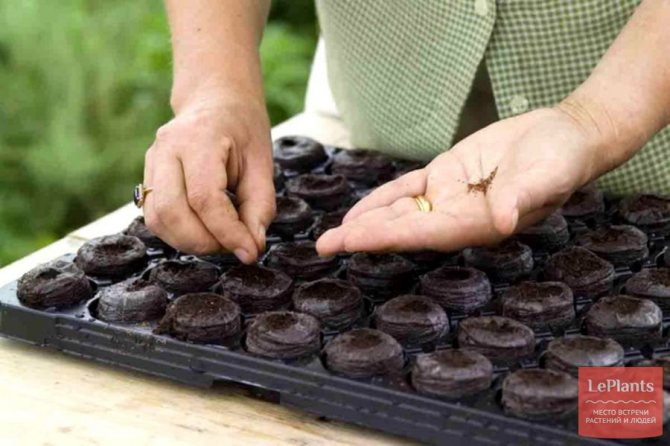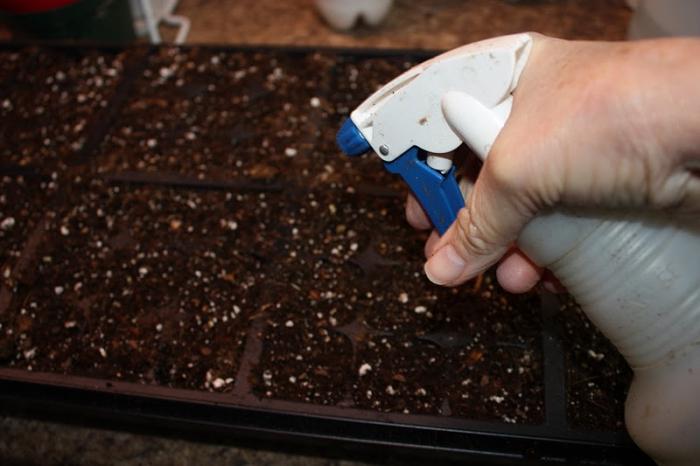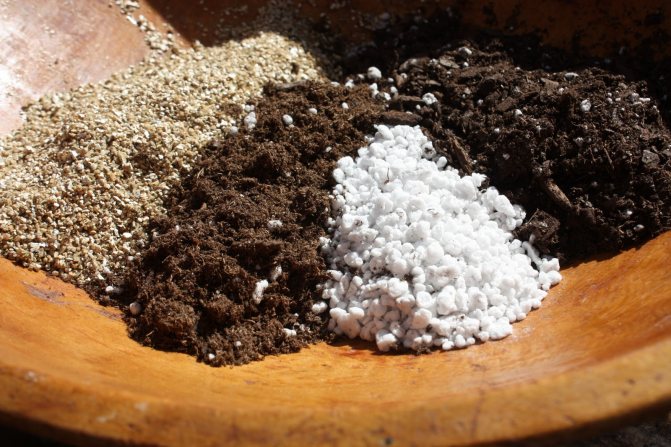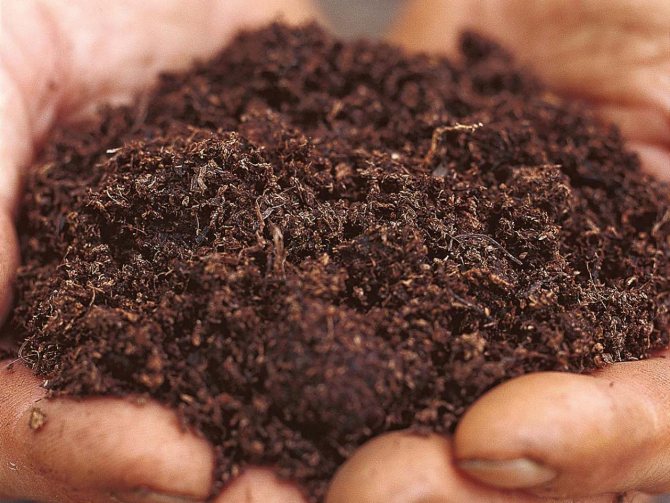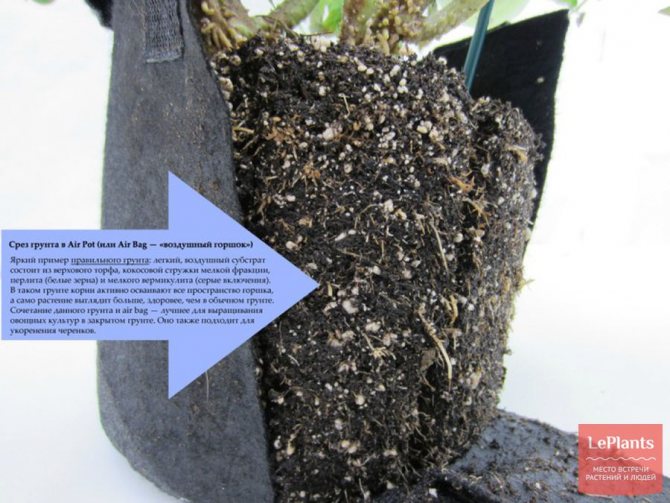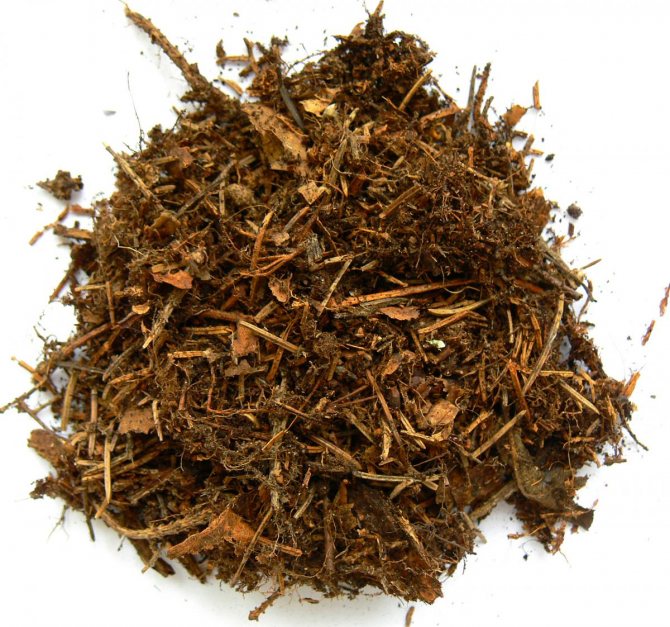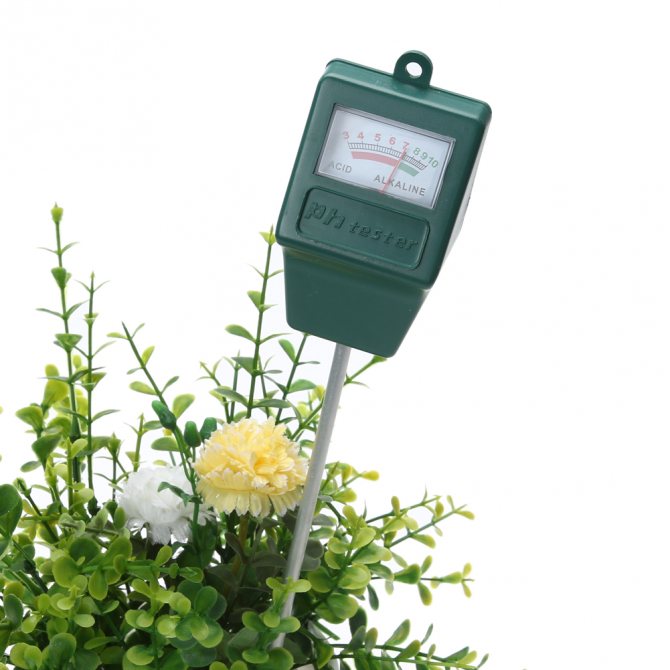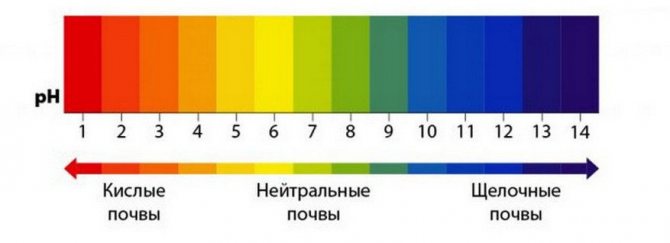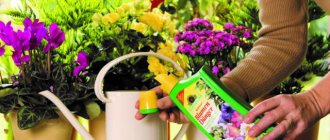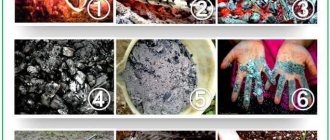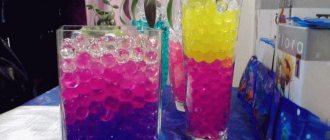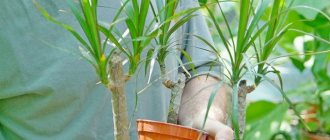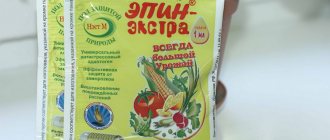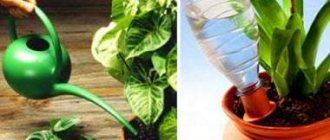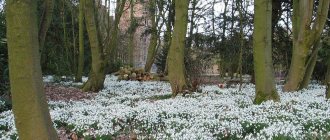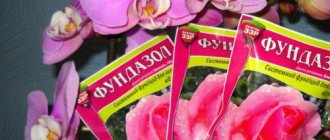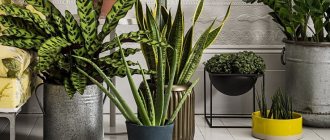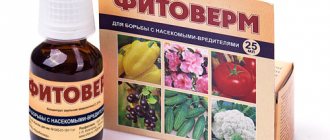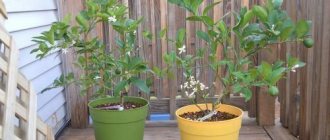A well-chosen soil for an indoor or garden plant, along with the correct temperature regime and timely watering, is the main factor in the normal development of the plant. The market is flooded with offers from different manufacturers, the quality of goods is different, and the buyer does not want to waste money and energy on a low-quality product.
Therefore, the editors of the site "Ya Nashla" made a detailed review of ready-made soil for plants, and we will also tell you how the soil mixtures differ from one another.
Preparing the soil for transplanting indoor plants
Plants in their natural conditions and in the open field do not always need fertilizers and feeding. They have a large amount of land at their disposal, which is restored in a natural way.
At home, only a pot of soil is at their disposal. Such a small volume must be supplied with all the necessary substances. The earth must be moisture and air permeable, heat conductive.
Before preparing the soil for planting or transplanting a plant, be sure to read about which land is right for it.
The plant may love acidic and slightly acidic soil (for example, azalea, hydrangea, cyclamen). Orchids love soil with a high degree of air permeability, be sure to have deciduous litter in the soil, or pieces of bark and moss.
For each of the plants, you can now buy special soil in stores.
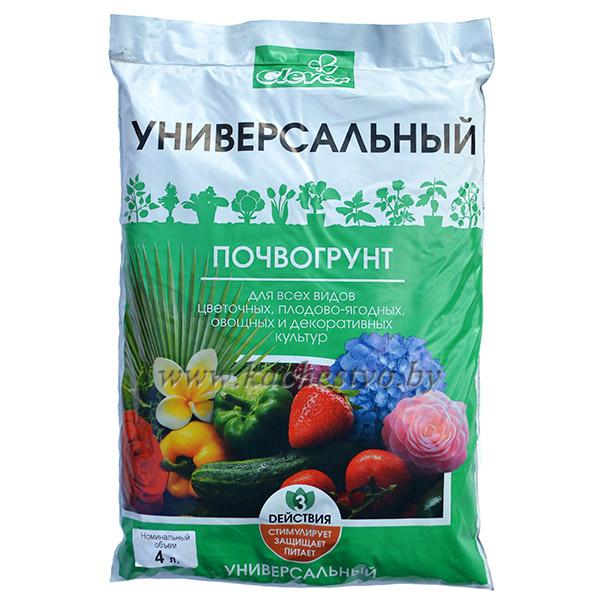
Universal soil
There are unpretentious plants that can be suitable for ordinary universal soil purchased in a store. Such soil, as a rule, consists of peat with the addition of useful macro and microelements.
You can prepare the soil on your own. Usually it is peat, turf, leaf, coniferous soil or humus. The prepared soil is mixed with sand, needles and other components. The harvesting process is quite long, for example, leafy soil turns into compost within two years. If you have your own piece of land, it will not be difficult to prepare the soil on your own.
Criterias of choice
Views
Soil for garden and indoor plants can be bought both in the store and do it yourself. But in order to choose a good product, you need to know what kind of soil there are, and what plants prefer to live where.
Easy
Small plants with a shallow root system thrive in this type of soil. For example: aloe, cyclamen. With a proper irrigation regime and proper soil strengthening, you can get large yields of cherries, pears, sweet cherries, and corn. Light soils are well suited for seedling as well as rooting cuttings. If you wish, you can make a light soil yourself according to the following scheme:
- three parts of any peat;
- one piece of sand; leafy land; humus.
Be sure to clear the ground from impurities - stones, twigs, pest larvae before mixing all the components.
Middle
The soil is suitable for most indoor and garden plants. To prepare the mixture with your own hands you will need:
- one part of peat and sand;
- two parts of sod land and humus.
Heavy
Ideal for plants with a very developed root system - when the roots go deep into the soil.You can prepare yourself like this - take five parts of sod soil, one part of coarse sand, one part of humus. Mix.
Soil characteristics
The main characteristics of the soil include:
- aeration - otherwise aeration of the substrate, its looseness, porosity;
- moisture capacity - how well the substrate absorbs and retains water;
- acidity level (pH). It can be acidic, slightly acidic (pH 6.0–6.5), neutral (pH 6.5–7.0), and also slightly alkaline - above 7.0. For every plant. For example, roses only survive at neutral pH.
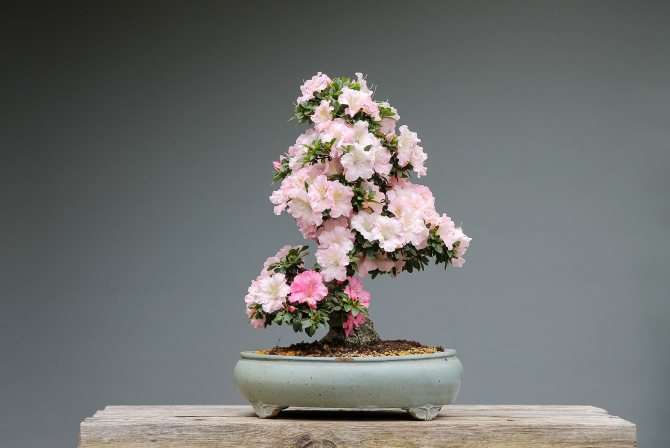

Soil composition
Main components
When making a choice, be sure to pay attention to the composition of the soil mixture. It directly depends on the conditions in which your plant will live, how much nutrients it will receive, what watering regime will have to be set and how often you will have to feed.
- High moor peat is the main component of most soils. It is characterized by a high level of air and moisture capacity. Light, acidic - pH 2.6 to 3.2. The main disadvantage is that it is poor in nutrients.
- Low-lying peat, on the other hand, contains a lot of nutrients. Therefore, it is not uncommon to find a mixture of high-moor and low-lying peat on sale. Low-lying peat is not used in its pure form, due to the fact that it belongs to heavy soils, quickly cakes, strongly retains water, and almost does not allow air to pass through.
- Biohumus. In fact, this is ordinary humus, that is, organic matter of the soil with nutrients for plants. The prefix "bio" was invented by marketers.
Good, high-quality humus is obtained in the process of processing manure and compost with special lines of earthworms. In practice, the store-bought humus may be land from a former state farm.
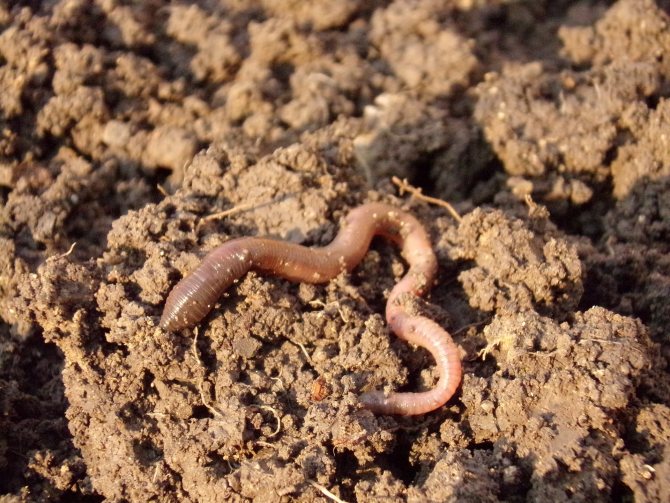

Humus is usually used to improve the quality of the mixture, increase its fertility and nutritional value. Rarely does anyone grow plants in pure humus, since such a soil is characterized by low air permeability and high moisture capacity.
- Leafy soil - soil resulting from the rotting of fallen leaves and tree parts.
- Coniferous land - similar to leaf land, only it is harvested in a coniferous forest. It is characterized by high acidity.
- Sod land - rotted particles of turf, soil that is overgrown with field plants.
Additional components
Consider the most popular substances that can be found in the compositions of ready-made soils.
Usually, additional components are needed in order to better reveal certain characteristics of the soil - to increase moisture permeability, increase looseness, change the pH value.
- Vermiculite is a mineral with a layered structure (like a sponge) that increases moisture capacity, as it retains moisture well (up to 400-500% of its own weight), and also slowly releases it together with dissolved nutrients. Popular in hydroponics. Also used for mulching and soil aeration.
- Perlite is a volcanic glass that, after additional heat treatment, has become porous and lightweight. Makes the mixture breathable, loose. Reduces the likelihood of decay, mold formation. It is used for germinating seeds, rooting cuttings, seedlings both in mixtures (for example, with peat) and in pure form.
- River sand makes the substrate loose, moisture-permeable. Prevents caking of an earthen coma. It is widely used for cacti, succulents, palms. It is necessary for bulbous plants, as it is able to protect the rhizome from excess moisture. The only drawback of the component is that it does not allow air to pass through well when wet. Therefore, you need to make sure that there is not too much sand in the pot.
- Sphagnum or peat moss can absorb up to 20 times more water than it weighs.This property can be used in two cases - if you have moisture-loving plants, and if you need to leave for a while. In the second case, wet moss placed in a pot will gradually release the accumulated moisture to the plant, and you will not worry about your pet.
- Charcoal, like moss, is capable of storing and releasing moisture. In addition, it increases the friability of the substrate and is a good natural antiseptic.
- Dolomite flour is one of the best soil deoxidizers. It is often used in mixtures with high-moor peat to reduce the acidity of the latter. It also enriches the substrate with magnesium, which is very important for plants during the growing season.
Be careful! Component-saving manufacturers are replacing dolomite flour with chalk. It works the same way, but does not contain nutrients.
Specialized soils
Divided into groups for:
Cacti, succulents
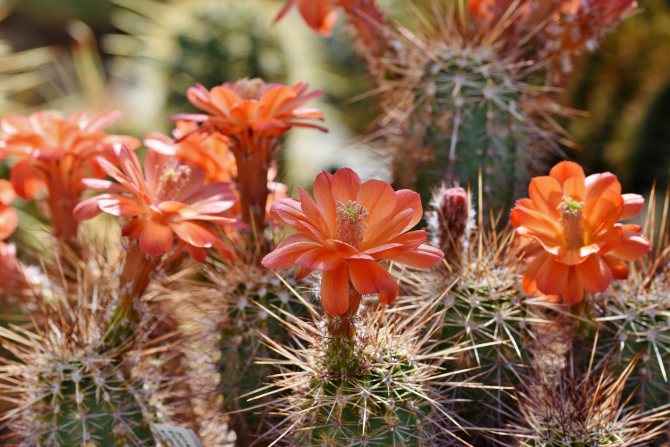

The main features of the finished mixture are high water permeability, low amount of nutrients. It is achieved due to the following composition: sand (usually river) - about half, and the second half - leafy earth or high moor peat.
For cacti, it is permissible to add a little coarse sand to the finished mixture. But if the cactus is forest, then it is better, on the contrary, to use a product based on high-moor peat.
Palm trees
All plants of this type are suitable for breathable, loose soil. Therefore, it is worth giving preference to products based on high-moor peat with the addition of sand, leaf and sod land. As the plant grows, one must not forget not only to feed and transplant the palm on time, but also to increase the amount of sod land in the pot.
Saintpaulia, other Gesneriaceae
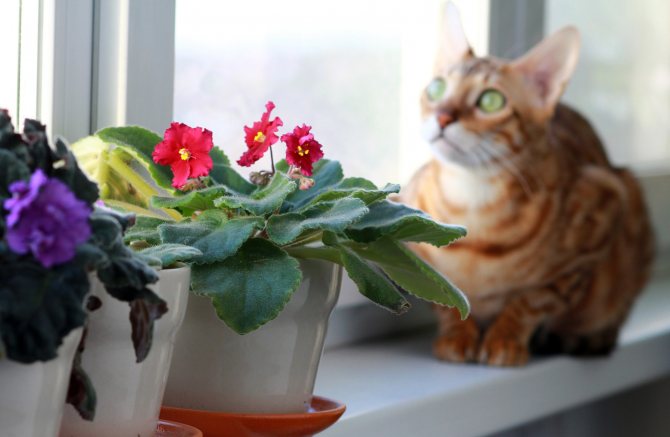

Only acidic soil is suitable for this family of plants. The optimal soil can be obtained by mixing high moor peat, sand or perlite (for looseness), coniferous soil, coal and sphagnum (for moisture capacity).
Orchids
There is no single type of soil for orchids, as these flowers are divided into several habitat groups. For example, epiphytic orchids live on trees and bark is best for them, sometimes with an admixture of moss and coal, and they wither in peat.
For the terrestrial type, a mixture of peat, coal, bark and moss, on the contrary, is ideal.
Bromeliads
The mixture usually consists of top peat, sand and leafy earth. For looseness, bark, coniferous soil, sphagnum, coal are often present.
Fernnikov
They always grow in moist, loose, and organic-rich soil. If the store does not have a ready-made mixture for your plant, you can take a mixture for cacti (made from peat, sand) that is poor in organic matter, add humus or leaf humus to it in a 1: 1 ratio.
Gardenia
The main characteristics of the substrate are light, sour, nutritious. The mixture usually consists of high-moor peat, river sand and humus or replacing leafy soil, as well as coniferous soil.
Azalea
The finished product for these colors should be light, air-, moisture-permeable, and acidic. Such properties can be achieved by taking high moor peat and coniferous soil (1: 1).
Soil disinfection
Before planting seedlings or transplanting flowers, it is necessary to disinfect the soil for indoor plants. The fact is that the soil may contain seeds of weeds and other plants that we do not need. It is even worse if the ground has been infected with fungus, microbes, mold spores, or insect larvae.
Preparing the soil for seedlings. Soft soil disinfection.
To a greater extent, disinfection refers to the soil harvested on its own. Purchased soil, in most cases, is already sterile and does not need to be processed.
Review of the best manufacturers
Which company is better to give preference to when choosing soil for seedlings or indoor plants? What brands provide a high-quality composition of the mixture, as well as an adequate price? We bring you the following list of manufacturers who have earned a positive reputation over the years in the agricultural market:
- PETER PEAT;
- Terra Vita;
- Zeoflora;
- Agricola;
- Hera;
- Mother Earth;
- Ogorodnik®;
- Garden of Miracles;
- Seliger-Agro;
- Fusco.
Soil disinfection methods
There are several ways to disinfect the soil, but it must be remembered that in all types of disinfection, be it chemicals and folk remedies, the beneficial microflora of the soil also suffers.
Freezing
Freezing is carried out as follows: the finished soil is taken out onto the balcony in winter (preferably if the temperature is less than 15-20 degrees) and left there for 2 weeks until it freezes. Then it is brought into a warm place before thawing. This is necessary to awaken insects, larvae and plant seeds sleeping in the ground. After the heat, we again take the soil out into the cold. This can be done two or three times, at low temperatures insects and plant seeds die.
This method cannot cure all diseases (eg late blight, keel), but it is effective against insects and plant seeds.
Calcination and sterilization
Calcining the soil in the oven
We set the oven to warm up to 80-90 degrees (at higher temperatures, the soil will deteriorate). At this time, put foil or baking paper on a baking sheet, pour the prepared soil onto it, spill it well with boiling water and send it to the oven for 30 minutes to ignite the soil. After the earth has cooled down a little, pour the calcined soil into the container, level it with a small layer (maximum 10 cm) and leave it to saturate with oxygen.
This method is capable of disinfecting the soil from all diseases and pests. The soil is enriched with oxygen and moisture.
Steaming in a water bath
Steaming the soil
The soil is poured into a colander on a double-folded gauze and placed over a pot of boiling water ... The bottom of the colander should not come into contact with the water. The earth must be constantly stirred in order to warm it up evenly for an hour and a half.
This method is also able to get rid of all diseases and pests, in addition, the soil is saturated with moisture.
Etching
Soil dressing consists in the introduction of substances into it, the vapors of which are poisonous to the insects and larvae in it. This method is dangerous for humans, since the substances introduced are poisonous and maximum safety measures must be observed (carbon disulfide, cyanide compounds, chloropicrin, copper sulfate). These methods can be used outdoors on a vegetable garden or farm scale, but not on indoor plants.
4 ways to disinfect soil for planting seedlings
Application of peat granules and organic fertilizers
What is made from peat? It is processed into small granules, which are sold in specialized stores. The mass looks like a black lump.
Organic fertilizers, which are similar in composition and characteristics, can be good substitutes for a fossil in a garden or garden plot. The substance can be replaced by:
- manure;
- chicken droppings;
- silt;
- compost;
- humus;
- humus;
- wood ash;
- sawdust;
- tree bark.
The composition and properties of peat make it possible to use it as a fertilizer for plant crops. It is used to increase soil fertility (humus formation), saturate the substrate with nutrients, improve air permeability, mulching and strengthen immunity in plants.
Chemical disinfection of soil
At home, it is necessary to use potent, chemical preparations only as a last resort, if biologically fungicides cannot cope with the disease or pest.
Chemicals come in solid, liquid and gaseous form and are applied to the soil or sprayed from above.All drugs should be used with extreme caution, some of them can even corrode the skin or cause poisoning in humans.
Chemicals:
- bordeaux liquid;
- copper oxychloride;
- oxyhome;
- phytolavine;
- carbonic copper;
- formalin;
- sulfur;
- carbon disulfide.
High efficiency against all types of diseases and pests, kills all harmful microflora and useful, high toxicity class for humans, can harm already growing plants.
It's easy to buy peat in our store!
Order peat from us! We offer high-quality horse and neutralized peat in bags of the Finnish Kekkila trademark to improve the agrotechnical properties of the soil. These are special mixtures that are enriched with the necessary fertilizers. Here you can buy peat that really meets the declared characteristics and will be really useful in your garden. We also offer economical peat mixtures for toilets, which effectively absorb odors and contribute to the speedy recycling of organic matter. To shorten the maturation time of the compost, we recommend using environmentally friendly composting accelerators.
Land cultivation after disinfection
After the soil has been disinfected by calcining or steaming, there is not only harmful, but also beneficial microflora in it, so the cultivated land needs to be introduced with beneficial bacteria and microorganisms.
With the help of the fungicide Fitosporin - M, the beneficial properties of the soil can be restored. The preparation contains bacteria Bacillus subtilis, which regenerate the soil by multiplying in it, and also destroy diseases. It is necessary to spill the soil with a solution and wait for the bacteria to multiply, this takes several weeks.
On a note! Fitosporin is available in powder, liquid and paste form.
The drug must be diluted with water. The dosage is as follows:
- to prepare the soil of indoor plants, it will be enough 5 grams on the 10 liters water powder.
- for the paste solution you need to take 15 drops on the 1 liter water.
- for dilution of liquid Fitosporin it is enough 10 drops for one glass of water.
Phytosporin can be used both as prevention of plant diseases and as soil restoration. In addition, it is safe for animals and humans.
Useful qualities of peat
Peat contains humic acids, which have a positive effect on the growth and development of plants. Biologically active substances contained in peat contribute to the development of beneficial microflora. Peat has a long service life, as it is resistant to microbiological decomposition. It holds fertilizers well due to its long-fiber structure. Fertilizers remain available to plants and are not washed out. Peat lightens the soil. Thus, the quality of both clay and sandy soils can be improved. Does not cake. Prevents soil shrinkage. It is a good heat insulator.
Watering with a strong solution of potassium permanganate
Spilling a pink solution of potassium permanganate is one of the easiest ways to disinfect the soil. Dissolve it in a proportion of three grams per ten liters of water. The soil is shed with this solution. Pots and boxes for seedlings are also treated with potassium permanganate.
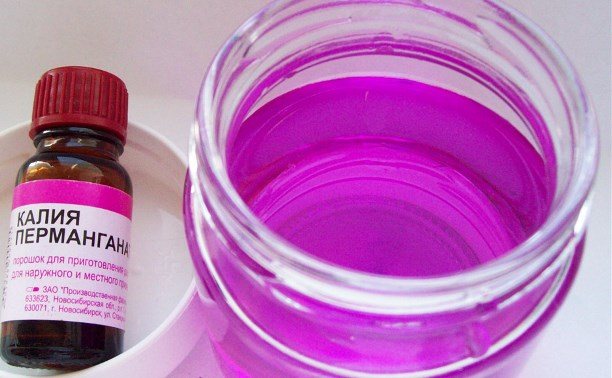

A solution of potassium permanganate (potassium permanganate)
A quick and easy way, after processing, manganese becomes fertilizer, but this method is ineffective and is not able to completely sterilize the soil.
Where does peat come from, methods of obtaining it and scope of use
Peat is formed in the process of decay of marsh plants. Depending on the depth of occurrence, lowland and upstream composition is distinguished. Peat is black, it is mined in swamps, river floodplains, deep ravines. It contains the following components:
- humus;
- nutrients;
- water.
The chemical composition of the fossil is not rich in trace elements, despite the fact that the main component of which peat is composed is humus.
Application
Many people ask the question: is peat a mineral or not? The substance consists of dense organic structures, therefore it does not belong to this group of substances. It is processed into:
- fuel for generating electricity;
- medications;
- peat insulating layers in construction;
- mineral fertilizers and compositions;
- peat boxes for seedlings.
The material is also used in the manufacture of filters for water purification.
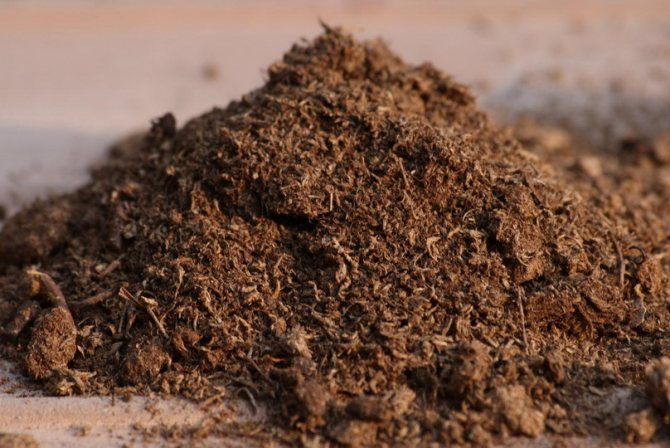

Means for normalizing soil acidity
Determinant of soil acidity or PH indicator - shows the amount of hydrogen ions in the soil. The acidity of the soil affects the absorption of water by the roots and the absorption of nutrients. The neutral acidity index is PH -7. The lower the index, the more acidic the soil is.
| Soil classification | |
| very acidic soils | pH 3.8 - 4.0 |
| strongly acidic soils | pH 4.1 - 4.5 |
| medium acid soils | pH 4.6 - 5.0 |
| slightly acidic soils | pH 5.1 - 5.5 |
| close to neutral soil | pH 5.6 - 6.9 |
Most often, indoor plants like neutral or slightly acidic soil, but there are many types of flowers that love more acidic (azalea, hydrangea, lupine).
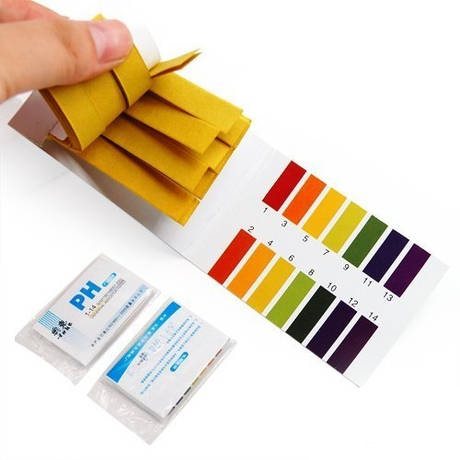

Acid-base indicator
To determine the acidity of the soil, you can use a litmus paper and a solution of soil in water, if the paper turns red, the soil is acidic, if green, it is alkaline.
In highly acidic soil, plants lack nutrients, all beneficial bacteria stop working, the plant dies quickly. Too alkaline soil is also not very good.
Ways to increase acidity:
- adding citric acid (0.5 tablespoons per 2.5 liters of water)
- addition of malic acid (10 g per 1 liter of water)
- introduction of oxalic acid (1 g for 2 liters of water)
- fertilization (superphosate, peat, sulfur sulfates)
Ways to lower acidity:
It is possible to lower the acidity of the soil by adding chalk and special preparations and fertilizers containing calcium and magnesium (cement dust, slaked lime, ground limestone, fluff). They improve soil quality and normalize acidity. But all this does not happen immediately, lime works in the soil for several years.
Peat types
Horse peat and its properties
High-moor peat is formed, as a rule, in bogs without the participation of underwater waters by decomposition of vegetation inherent in the area, including sphagnum moss.
- High moor peat is sour, Ph 2.8 - 3.6;
- Does not contain weed seeds;
- Has a high (about 95%) porosity;
- It has a high moisture content of 60 - 70%.
Horse neutralized peat
Neutralized high-moor peat is the result of processing the material with a low degree of decomposition with limestone flour, which lowers the acidity of high-moor peat to 5.5 - 6.5 Ph. At the same time, it retains the porosity, moisture content and other qualities of high-moor peat.
Lowland peat and its properties
Lowland peat is formed by the decomposition of mosses, plants and wood growing in ravines and rivers. Unlike high-moor peat, lowland peat is formed with the participation of groundwater.
- Ph level 5.5 - 7;
- The water capacity is less than that of high-moor peat by about half;
- It is characterized by a high degree of decomposition;
- Contains more ash substances, nitrogen.
Signs about a flower pot in a dream
When you dream of flowers in pots, this is one of the most favorable stories that predicts good luck and success in the future. Perhaps there is a large material reward in front of a person, or he will buy expensive property. However, this interpretation is true in the case when the flower did not fall and dreamed of blooming, green and fresh. If in a dream a person sees sluggish, dried flowers, then this may indicate trouble in the future. For example, there will be troubles at work, financial losses or family quarrels.When a flower falls off in a dream, it speaks of illness.
If in a dream a person dropped and broke an empty pot on the floor in the room, poured earth from the pot or broke it, then this may portend a family discord in the future, up to a divorce. Also, scattered earth at night speaks of illness, loss of loved ones or financial difficulties. It is worth considering that dream prediction may depend on who dreamed of the flower pot. For example, if a young girl dreamed of a beautiful flower, then a wedding awaits her. For older women, a blooming flower speaks of a possible pregnancy, and for older women, such a dream promises the presence of diseases of the reproductive system.
Content
- 1. Characteristics of the soil
- 2. Soil composition 2.1. Horse peat
- 2.2. Low peat
- 2.3. Biohumus
- 2.4. Sod land
The search for the ideal soil for your favorite indoor flora is like the search for the mystical "Holy Grail", which will instantly make the plant bloom in a lush bouquet. In reality, the stories of search and selection are more like fishing ones: if a neighbor bites (read - it grows / blooms better), then his worm (earth) is better. However, the truth is often not buried at all in the ground, although it is one of the four pillars of correct crop production, along with lighting, watering and care.
What is the best soil? The answer to this question depends on which plant is on your windowsill. The best soil for Azalea is the worst soil for a desert cactus. Both will be completely unsuitable for aquatic plants. And some plants do not need soil at all (for example, epiphytic orchids or Tillandsia usneiform aerofit). However, if you do not touch exotics, then almost all soils have characteristics that unite them, the knowledge of which will help to find the right soil among similar ones for your plant.
How to acidify the soil
If the reaction of the soil is closer to alkaline, organic fertilizers are introduced into it: compost with the addition of rotted needles and sawdust, high peat, fresh manure.
Organic matter delicately acidifies the soil, additionally makes the soil looser and more breathable. If you need a quick result, use mineral compounds: ferrous sulfate, ammonium nitrate.
Reference. Colloidal sulfur significantly lowers the pH, however, it acts slowly, therefore, it is introduced mainly for autumn digging (100 g per 1 sq. M). They also come with ammonium sulfate and potassium sulfate.
Why do animals eat and dig the ground?
Usually young Alabai puppies and kittens, who are just mastering the new world and trying to taste everything, dig or eat earth, grass, coal. How to wean a puppy or a child if he climbs and rakes the soil? The animals are driven by the usual curiosity, so after several attempts to eat the earth, everything stops. A toy terrier puppy will understand that the earth is not tasty and will not try it again. However, this symptom is not curiosity, but the reason for the psychological state of the dog or cat. This happens due to the fact that the animal does not feel comfortable in the house or has dislike for a new family member.
Perhaps the owner treats the cat or dog badly, punishes him, and he takes revenge in this way. Sometimes animals gnaw and tear off furniture, walls or shoes of their owner. Therefore, in order to understand why an animal licks clay and sand, digs or eats soil from a flower pot, it is necessary to examine its health, for example, for cat anemia. If the reasons lie in the personal enmity of the animal or in psychological discomfort, then the owner and his household should give the pet more affection. It is very important to communicate more with the pet, give it time, praise it, play with the animal.
What to look for when choosing a ready-made soil
Priming:
- must allow air to pass through;
- must be nutritious;
- should not retain moisture for a long time;
- should not contain pests and pathogens;
- the acidity of the soil should correspond to the level that is needed for a particular type of plant.
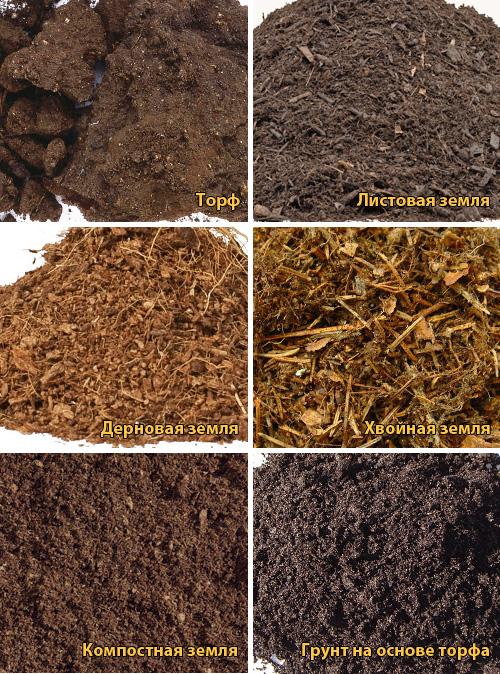

Similar articles:
- Kits for growing plants and flowers
- Wedding bouquet
- Soil for azaleas
- Flowers for the balcony
- Racks on the windowsill for flowers
- How to extend the life of a bouquet
Output
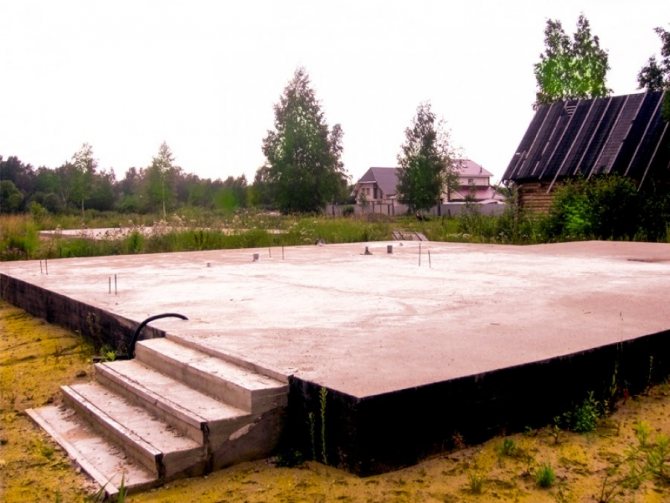

Slab foundation on peat soil
We learned what peat and peat soil are, how interesting and rich in various components, useful elements and substances the earth is. How it is useful for various industrial and agricultural areas.
And most importantly, for ordinary people, how well peat soil can help when growing a large yield of vegetables and greens, as well as for stunning multi-colored flower beds, flower beds and home flowers and plants.
Preparatory work
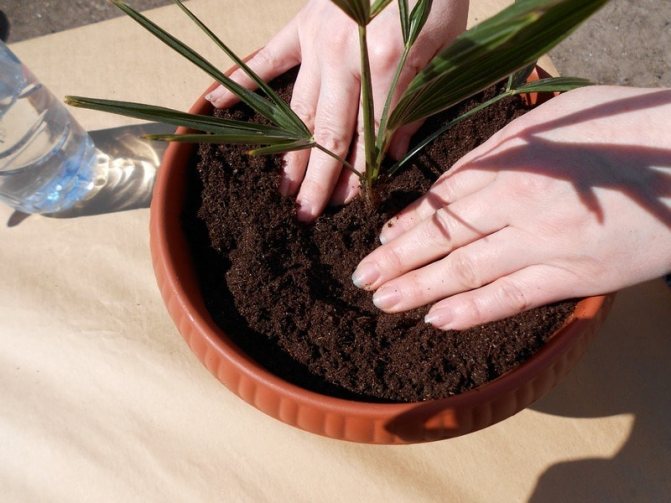

Transplanting a palm tree in begins with preparing high-quality soil and choosing a new pot.
Optimal soil composition
The main requirements for a quality substrate for planting a palm tree are looseness, air and water permeability, and the presence of nutrients.
Attention should be paid to acidity, the level of which should be in the range of 6.3-6.5 pH.
The use of exclusively purchased transplanting substrate is advisable for young seedlings that need light soil.
In other cases, it is better to use a store-bought mixture as a base, additionally adding sand, leafy, turf soil and peat to it.
However, it is best to prepare the soil mixture yourself, selecting the components according to one of the following schemes:
- 1 part of sand and humus, 2 parts of garden soil;
- 2 parts of sod and leafy soil, 1 part of peat, coarse sand and rotted manure, crushed charcoal;
- Leaf humus, clay turf, peat, sand, crushed charcoal and organic fertilizer in equal proportions;
- Low-lying peat, coarse sand, dolomite flour and mineral fertilizer in equal proportions.
Before use, the soil mixture must be disinfected in one of the following ways:
- Warming up in the oven at a temperature of about 100 degrees;
- Steaming for half an hour over a boiling water bath;
- Spilling with a weak solution of potassium permanganate.
It is possible to transplant a palm tree into a sterilized substrate only after it has completely cooled down.
Which pot to transplant?
Aesthetic appeal is not the most important point to be guided by when choosing a flowerpot for a palm tree. The container should be stable and high so that the plant does not fall from the windowsill or stand.
It is better to give preference to pots of light shades - they do not attract sunlight, thereby preventing overheating of the roots.
It is worth paying attention to the following points:
- With each subsequent transplant, the size of the pot is increased by 2-3 cm so that the root system can develop normally.
- For massive palms, flowerpots are selected, the diameter of which is 1/3 larger than the previous container.
- The presence of several drainage holes at the bottom is required.
You should not take pots "for growth", since a large amount of free space will inhibit the growth of a palm tree.
The root system will reclaim the soil to the detriment of the growth of green mass, while the risk of flooding the palm tree increases significantly.
The best DIY flower mixes
Ready-made potting mixes are not able to fully meet the needs of indoor plants. Experienced growers prefer to compose the soil on their own, taking into account the characteristics of the flower.
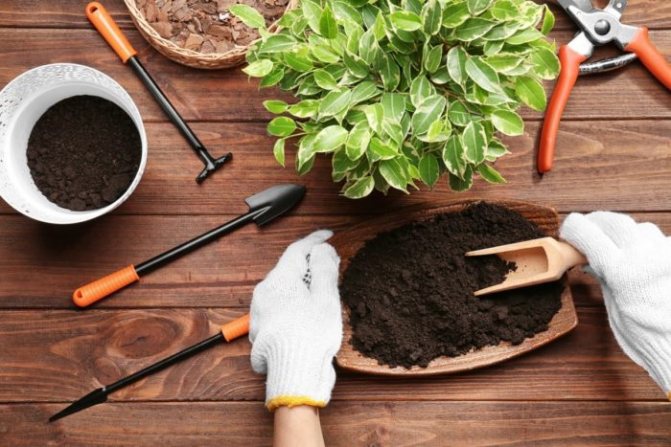

The basis of the homemade mixture is peat, to which the following components are added in different proportions:
- sod land;
- humus;
- charcoal;
- sphagnum moss;
- coconut chips or shavings;
- vermiculite;
- river sand;
- perlite;
- needles.
Prepare the components of the potting mix on their own or purchase the necessary components in the store. When preparing, wear rubber gloves and mix the elements with a spatula or by hand. Then the soil is clamped and unclenched in the palm of your hand, and its condition is assessed. It should not be too loose, but not stick together into a lump.
Leaf land
Perhaps the lightest and most loose soil for plants. A mixture of a substrate, which contains leafy soil, perfectly passes water and air to the root system, but its nutritional value is at an average level, since such planting material is obtained as a result of decay of simple leaves from deciduous trees. They are harvested in small piles in the fall and left for one to two years. In order for the process of overheating to go faster, the layers of the heap must be constantly watered and turned over. Leafy soil can be used to enhance the acid reaction.
Ready-made soil mixtures for collection floriculture
For the convenience of flower growers, I have developed a number of soil mixtures "Agricola soil". They are specially designed for individual species or groups of plants and take into account their dependence on the structure and chemical balance of the soil.
- Vegetable soil "For ficuses" is intended for the following large-sized indoor plants: ficuses, palm trees, Chinese rose, coffee tree;
- Vegetable soil "For violets" is ready for use under all types of violets, coleus, balsam, saintpaulia;
- Vegetable soil "For cacti and succulents" is specially formulated for all types of cacti, leaf and stem succulents;
- Vegetable soil "For conifers" is used for growing undersized conifers indoors: thuja, hemlock, cypress, cryptomeria, araucaria and others;
- Vegetable soil "For growing roses" is an ideal soil for indoor representatives of the pink family (hybrid rose, polyanthus, quince), as well as for chrysanthemums, dahlias and some other Asteraceae species.
All special soils are available in convenient 6 liter bags. They do not take up much space and are suitable for use in small collections.
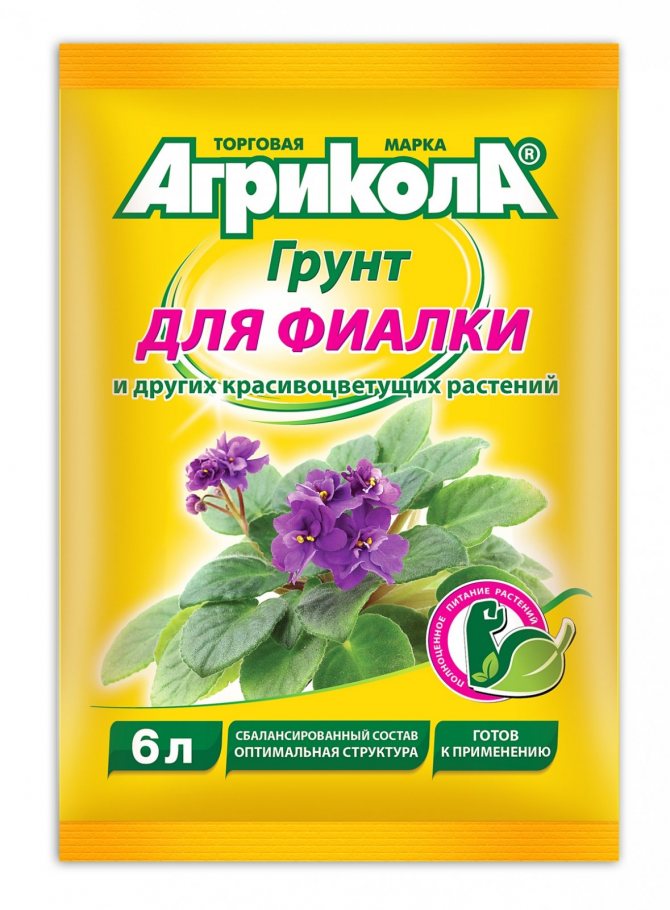

Vegetable soil "For violets"
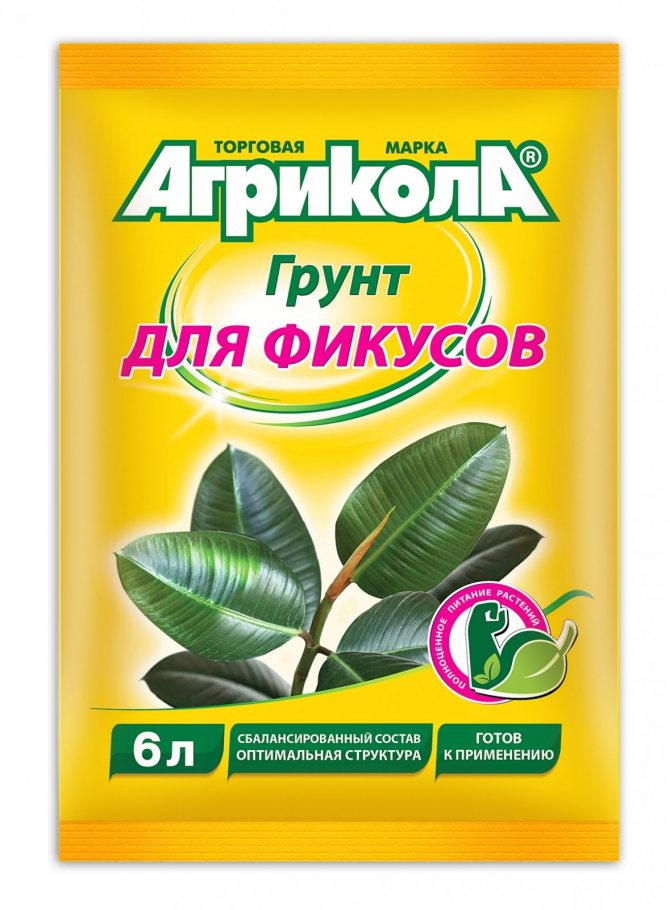

Vegetable soil "For ficuses"
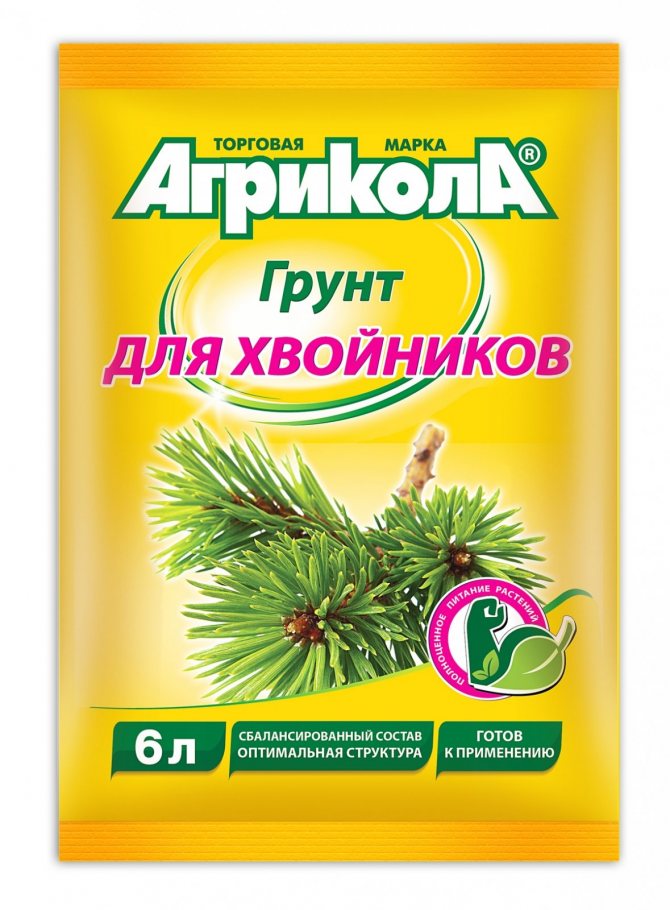

Vegetable soil "For conifers"
Coniferous land
This type of acidic light earth is perfect for growing flowering houseplants such as azaleas and anthuriums. The soil is the top layer of litter taken from a coniferous forest (usually pine). If you decide to prepare the soil for the plants yourself, then you should know that you do not need to remove the layer from the very top, since there are many unperturbed needles. It is best to use the bottom layer, which is at a depth of 20 centimeters or more. This is a fairly loose soil with a reaction of 4 to 5 pH.
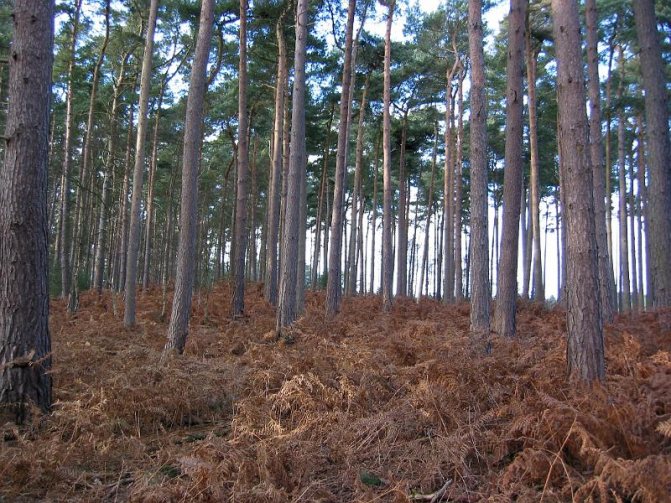

Special types of substrates
Special substrates are soil mixtures designed and selected for a specific family, species or type of indoor plants. A distinctive feature of such a soil is its narrow focus. These earthen mixtures differ from universal ones not only in their structure and acidity, but also in varying degrees of nutritional value, which is achieved thanks to additional additives in the form of sphagnum or pine bark. Such formulations are always better than universal ones, since they really satisfy all the needs of indoor crops. However, it will be extremely difficult to choose this type of substrate, so first you need to familiarize yourself with the information about the plant itself.
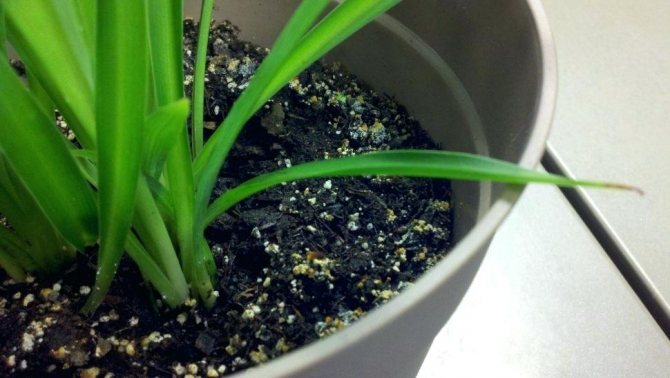

Special types of substrate include:
- soil for violets;
- soil for growing indoor roses;
- substrate for tubs, jasmine, citrus;
- soil for palm trees (in rare cases, you can find separate mixtures for dracaena and yucca);
- soil for succulents and cacti;
- earth mixtures for decorative deciduous and decorative flowering plants.
Moreover, ready-made soil for plants of narrow specialization is perfect for representatives who are similar in soil requirements. For example, in the soil for violets, almost all Gesneriaceae will feel great, and the soil for yucca or dracaena is also suitable for hibiscus. But orchid soil is a highly specialized substrate that can only be used for orchids.
Transplantation methods and technology
Algorithm of actions for a planned transplant of a room palm:
- Carefully remove the plant, along with the earthy clod, from the pot.
- Shake it off lightly and if you identify sick, infected areas, cut off the roots without affecting healthy tissue.
- Powder the wound surface with crushed coal.
- Lay a drainage layer of broken brick, expanded clay, pebbles, ceramic shards at the bottom of the container. Its thickness should be 3-4 cm.
- Sprinkle with fertile soil.
- Place the plant in the center of the flowerpot, if necessary, straighten the roots, and fill the resulting voids with new soil mixture.
- Slightly compact the soil.
- Moisten it.
- Add soil after shrinkage.
It is not recommended to deeply deepen the root collar.
Bark
In most cases, growers exclusively use pine bark. It can be collected right in the forest. For disinfection and softening, the material is boiled for 30 minutes in boiling water, after which it is cut into small pieces. The bark will give the substrate good water permeability, as well as lightness. It will also provide an acidic reaction for the mixture (4-4.5 pH). Pine bark is also used to loosen the soil for plants. This property is especially demanded by aroids, ferns, and most of all - orchids.
Pot for different types of palms
Before you start transplanting a plant, it is important to remember: regardless of the type of planting, it has a very fast growth rate.
For example, by planting a palm tree in a small pot, after 2-3 years it will have to be replaced with another one. Therefore, growers often use disposable pots.
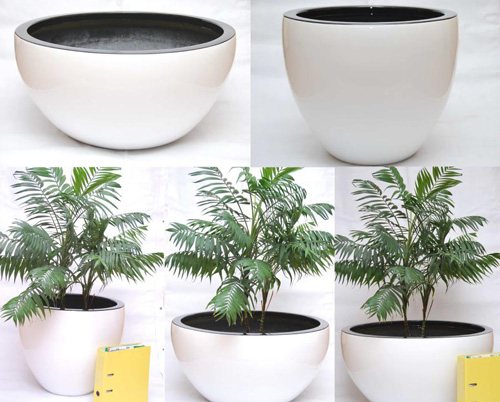

Consider which pot is best for different types of plant:
- Date.The plant does not tolerate the exposure of the root system, therefore, during transplantation, it is better to keep the earthen lump removed from the previous pot.
A small ceramic pot with a glazed surface is optimal for the date palm. Yucca. As you know, yucca grows large and spreading. Its root system reaches enormous sizes, so the flowerpot must match the dimensions.
When transplanting a yucca, there is no need to completely remove the roots: the ceramic old pot is broken, and the plastic one is cut. Dracaena. During a dracaena transplant, it is worth following the above rules. The pot is selected based on calculations: 25-30% larger than the previous one.
At the same time, it is not recommended to plant a small plant in a large flowerpot and do the opposite.
When a small shoot is planted in a large flowerpot, there is a high probability of the death of the plant due to rotting of the roots. Tsikas. There is an opinion that when the plant is slowly transshipped, its development stops, therefore it is important to observe the transplantation time.
Tsikas is a sprawling plant with sharp thin leaves on a branch.
When transplanting it, the root system must be preserved. The pot will fit 10% more than the previous one.
It was noted that growing a palm tree under the same conditions, but in different sized pots, had different results.
For example, without transplanting into a large flowerpot, the palm tree stopped growing properly.
According to the color of the product, it is better to choose light options: in the summer, such a pot will not attract sunlight to the soil.
Rating of the best soil for plants
To compile this rating, we took into account the opinions of experienced agronomists, who advise, when choosing a soil for plants, pay attention to the following qualities:
- Softness, lightness and friability;
- Acidity;
- Structure;
- The presence of a certain set of micronutrients;
- Lack of impurities and debris;
- Good aeration (air permeability);
- Required humidity;
- Convenient packaging;
- Cost.
Also, when selecting goods, we paid attention to the volume offered by manufacturers. Today, several types of mixtures can be purchased in stores. Florists divide the soil mixture into a universal one (designed for planting most unpretentious crops) and a special one that takes into account the specific needs of plants. Our rating includes the most popular options of both the first and second types.
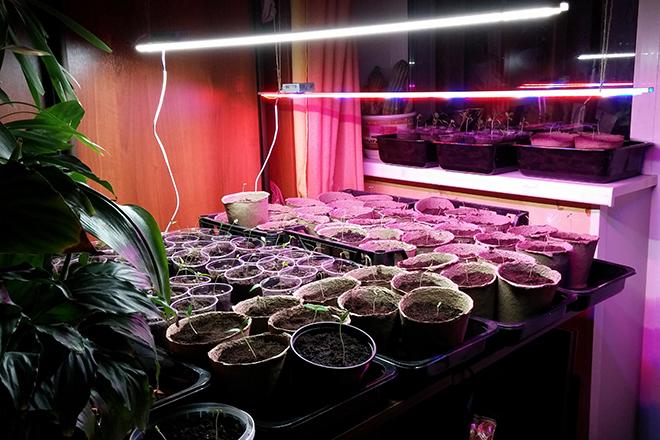

The best phytolamps
Features of soil deoxidation
For deoxidation, substances with an alkaline reaction are used:
- slaked lime;
- dolomite flour;
- wood ash;
- ground chalk;
- crushed eggshell;
- drywall - deposits of lacustrine-bog reservoirs;
- nitrate fertilizers;
- ready-made complex preparations ("Uglemuk", "Lime gumi").
The frequency and rate of alkalization depend on the initial pH values, soil density and the amount of humus in the soil. On heavy clay soils, the deoxidation effect will last longer, therefore, the preparations are applied in larger quantities, but at intervals of 5-7 years.
Reference. Green manure plants also help to level the acidity: vetch, phacelia, rye, lupine, oats, legumes. However, it is necessary to sow the site with them in advance - during the autumn soil preparation.
Sod land
The result of overheating of sod layers is a fairly nutritious soil. To prepare the substrate, you must put the grass in a heap, and then cover it with a layer of cow dung. All that remains is to wait out when this "pie" is overheated. The substrate is used for planting plants that prefer acidic soils, since the sod land has an acidity of 5 to 6 pH. In order to reduce the reaction, as well as give the substrate a looser structure, sod land is often mixed with other types of soil, as well as sand or clay.
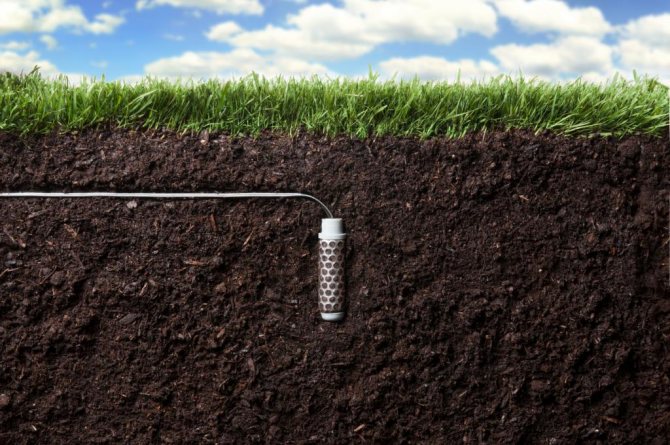

How to choose the right place on the site for growing potatoes
When choosing a place for organizing potato furrows, take into account:
- Illumination of the site. Potatoes love light. In partial shade and shade, the tops develop slowly, and the tubers are small and small.
- Humidity. The vegetable should not be planted in the soil with stagnant water - the seed will rot before it has time to start growing.
- Windproof. Preference is given to areas planted with trees or shrubs on the north side. This will protect the soil from erosion, and planting from hypothermia.
Important rules
Substrate - ("substratum" in Latin - "nutrient medium") is a mixture of elements in a certain proportion, designed to replace the plant's natural soil. If the soil in our garden is saturated with nutrients and is capable of renewal, then the soil for plants in a pot is only a conductor of water, oxygen and trace elements to the root system. You need to monitor it, saturate it, maintain a certain humidity. Therefore, the initial nutrient substrate is already half the battle! Important rules: transplanting and pruning indoor flowers.
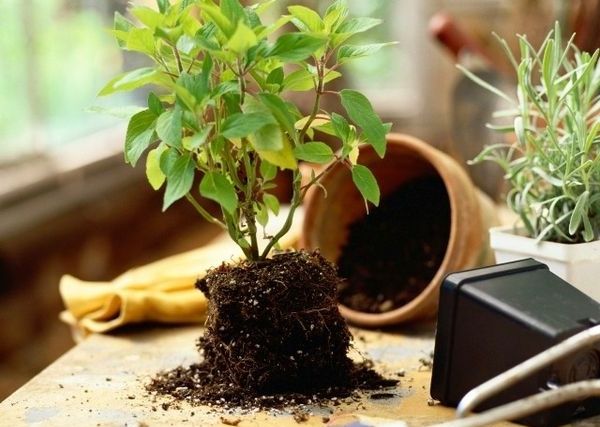

- Before planting a flower, a test can be done. Pour the earthen mixture into a pot and water liberally, then evaluate the degree of moisture absorption, time until complete drying, looseness after watering.If the plant is moisture-loving, it is necessary that the soil retains water, and if the flower loves arid soils, it is desirable that it does not accumulate excess moisture and dries out quickly.
- Before using purchased soil, feel it: too dry, or wet substrate is the result of improper storage. You can correct its moisture content by sprinkling it from the pulverizer, or, conversely, by air-drying it. How to choose a flower pot.
- Before using the ready-made substrate, open the package and mix its contents thoroughly. Leave the soil open for a couple of hours to saturate it with oxygen.
How to compose the soil yourself
Palm trees up to 5 years of age are transplanted into new soil every spring. Adult specimens are transplanted every 3 years, as needed. It is advisable to replace the topsoil every six months. Immediately before transplanting, the plants are not watered, the soil should be slightly damp.
Soil for young palms
1 part turf land 1 part leafy land 1 part high moor peat ½ part coarse sand
The older the palm, the "heavier" the soil should be; for this, sod and leafy soil should be present in its composition.
What soil does thuja like - acidic or alkaline
Although thuja can grow in any soil, alkaline is not entirely suitable for it. Such a substrate is heavy, viscous and poorly permeable to moisture, which is unacceptable for a plant - stagnation of water at the roots can destroy it. The best option is loam with weak acidity or with a neutral pH of 4–5.5.
Did you know? The most widespread species in the world is thuja occidentalis, which is often used in the production of perfumes and cosmetics due to its very persistent smell.
Potted soil decoration
When decorating the ground in a flower pot, in most cases fine gravel is used, which is painted with multi-colored dyes.
Painted stones are washed with water and poured into a lump in a flower pot with a layer of up to 2 cm. If desired, patterns, drawings or ornaments are made of colored stones. The main thing is to show imagination and use stones of different sizes for mulching, ranging from 2-3 mm and ending with large specimens up to 1 cm.
Fine orange gravel or coarse colored sand, which can be bought at a flower shop, is also used to decorate the top layer of the soil.
Usually soil is decorated for different sized cacti in landscaping. Group plantings of succulents of different varieties, which are decorated with multi-colored pebbles, look very impressive. You can also use sea, small pebbles, pebbles for decoration. For plants that need high moisture, sphagnum moss is used, which makes the surface of the soil a rich green color. If the moss has lost its useful properties, then its top layer turns brown. In this case, it is replaced with new moss. A lot of useful information in the article: Do-it-yourself garden and indoor flower stand from various materials.
How often does a palm tree need to be transplanted?
Recommended the frequency of replanting young green space - every year, but for instances under the age of 6 - once every 2-3 years... It is already becoming extremely problematic to transfer adult plantings into spacious flowerpots, therefore they replace the topsoil with a nutrient-rich substrate. In addition, replacing the soil with a new one is carried out in urgent need, when the root system began to rot or it was attacked by harmful insects.
Palms over the age of three years are quite painful to react to any damage to the roots. Given this feature of these whimsical plants for keeping conditions, they should be moved to a larger pot using the transshipment method. It is less traumatic for the fragile underground part of the flower.
To preserve the integrity of the earthen coma it is necessary not to carry out any irrigation measures for several days. Then it will be much easier to remove the palm from the pot, since the earth will dry out. If parasitic individuals were found in the soil, then a slightly different approach will be required.
First should be treated with appropriate fungicidal agents, then remove areas of the root system affected by pests and transplant into a prepared container with a new universal substrate.
When transplanting a palm tree, it is important to use an exceptionally sharp and disinfected instrument and not cut off healthy tissue, otherwise the underground part of the phytobeauty will begin to dry out, which will lead to its death.

